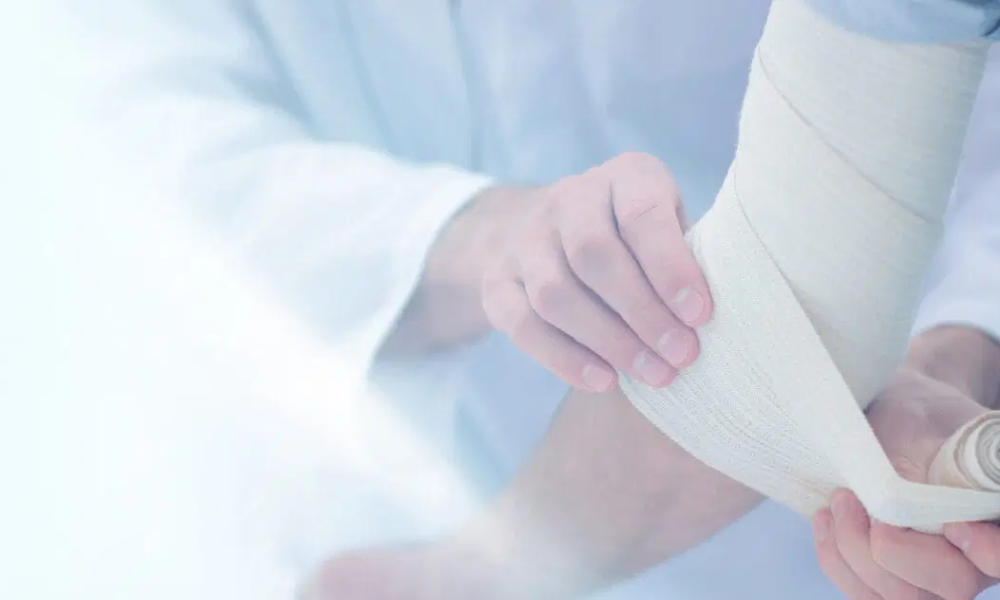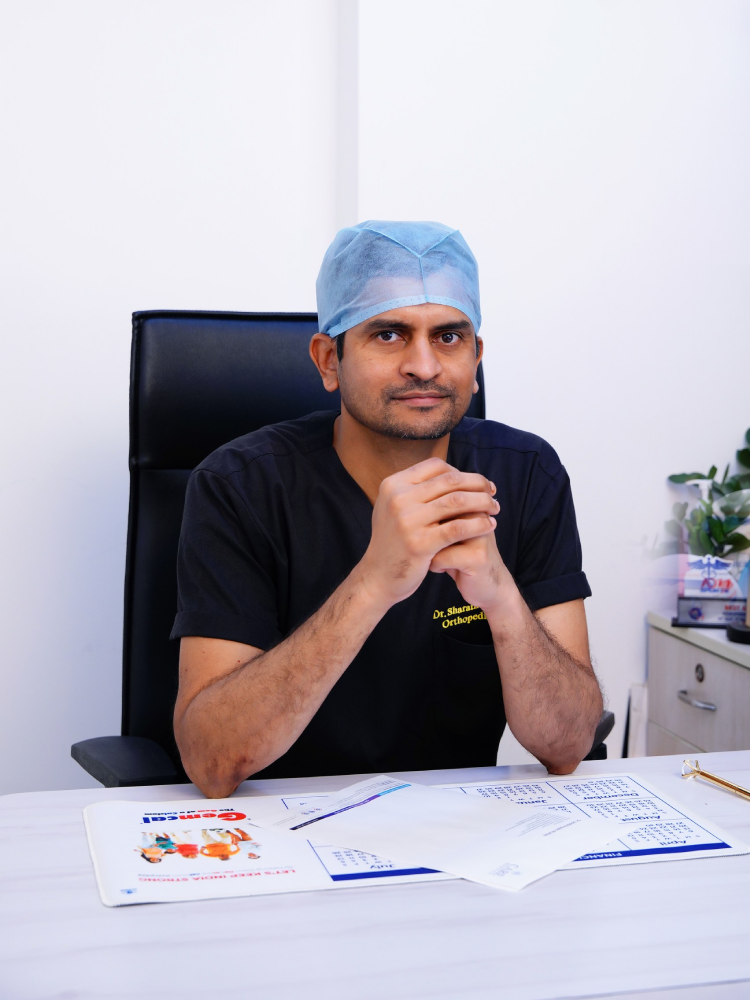
Best Trauma Care Treatment in Hyderabad
Dr. Sharath Babu – Trusted Orthopedic & Trauma Care Specialist in Hyderabad
With over 15 years of expertise, Dr. Sharath Babu stands as a leading orthopedic surgeon in Hyderabad, renowned for delivering the best trauma care treatment. Specializing in emergency fracture management, complex limb realignments, and life-restoring surgeries, he combines precision with compassion. His ‘one patient, one treatment plan’ philosophy ensures personalized care—whether it’s a sports injury, road accident trauma, or degenerative joint condition. Equipped with cutting-edge techniques and a patient-first approach, Dr. Sharath Babu is Hyderabad’s go-to expert for advanced trauma recovery. Trust him for tailored solutions that restore mobility, strength, and hope after critical injuries.
What is Trauma Care?
Trauma care is a specialized branch of emergency medicine focused on the immediate treatment and long-term recovery of severe, often life-altering injuries caused by accidents, falls, violence, or sports. It involves a multidisciplinary approach to stabilize patients, prevent complications, and restore function.Key Components of Trauma Care
Trauma care involves a systematic, multidisciplinary approach to manage life-threatening injuries and ensure optimal recovery. Here are its essential components:- 1. Immediate Emergency Response
- • Triage & Assessment: Rapid evaluation of injury severity (ABC protocol: Airway, Breathing, Circulation).
- • Stabilization: Controlling bleeding, preventing shock, and immobilizing fractures/spinal injuries.
- 2. Advanced Medical Interventions
- • Surgical Care: Emergency surgeries (e.g., internal fixation of fractures, vascular repair, decompression for head trauma).
- • Damage Control Orthopedics (DCO): Temporary stabilization of fractures in critically injured patients.
- 3. Diagnostic Precision
- • Imaging: X-rays, CT scans, or MRIs to identify fractures, organ damage, or internal bleeding.
- • Lab Tests: Blood work to monitor infection, clotting, or organ function.
- 4. Specialized Trauma Treatments
- • Fracture Management: Realignment, casting, or surgical fixation (plates, rods).
- • Soft Tissue Repair: Tendon/ligament reconstruction or flap surgeries for severe wounds.
- • Pain & Infection Control: Antibiotics, nerve blocks, or epidurals.
- 5. Rehabilitation & Recovery
- • Physiotherapy: Restoring mobility, strength, and function.
- • Psychological Support: Counseling for post-traumatic stress (PTSD) or anxiety.
- 6. Preventive & Long-Term Care
- • Nutritional Support: For bone and tissue healing.
- • Follow-Up: Monitoring for complications (non-union, infections, or arthritis).
Did You Know? The "Golden Hour" (first 60 mins post-injury) is critical for trauma survival!
When is Trauma Care Needed?
Trauma care becomes critical in scenarios involving severe, sudden injuries that risk life, limbs, or long-term function. Here’s when to seek immediate specialized care:- 1. High-Impact Accidents
- • Road crashes (bike/car collisions, pedestrian accidents)
- • Falls from height (construction sites, stairs)
- • Crush injuries (industrial/machinery accidents)
- 2. Severe Musculoskeletal Injuries
- • Compound fractures (bone piercing skin)
- • Multiple fractures (pelvis, femur, spine)
- • Dislocations with nerve/vessel damage (e.g., hip/shoulder)
- 3. Life-Threatening Trauma
- • Head/spinal injuries (skull fractures, paralysis risk)
- • Chest/abdominal trauma (internal bleeding, organ damage)
- • Severe burns or amputations
- 4. Sports/Extreme Activity Injuries
- • Tendon/ligament ruptures (Achilles, ACL)
- • Stress fractures (from overuse in athletes)
- 5. Post-Surgical Complications
- • Infected/non-healing wounds
- • Failed previous repairs (malunions, implant issues)
Comprehensive Trauma Care Services
Trauma care encompasses a range of specialized medical services designed to treat severe injuries urgently and effectively. Here are the key services offered:- 1. Emergency & Critical Care
- • 24/7 Trauma Response: Immediate stabilization of life-threatening injuries (ABC protocol—Airway, Breathing, Circulation).
- • Damage Control Surgery: Temporary fixes for severe bleeding or fractures in unstable patients.
- 2. Advanced Surgical Interventions
- • Fracture Fixation:
- 1. Internal Fixation: Plates, screws, or rods for complex fractures.
- 2. External Fixation: Temporary stabilization for open or infected fractures.
- • Limb Salvage & Reconstruction: Reattaching severed limbs or repairing severe crush injuries.
- • Arthroscopic Surgery: Minimally invasive repair for joint injuries (knee, shoulder).
- • Fracture Fixation:
- 3. Orthopedic Trauma Services
- • Pelvis/Acetabulum Fracture Repair
- • Spinal Fracture Stabilization
- • Pediatric Trauma Care (growth plate injuries, child-friendly techniques)
- 4. Soft Tissue & Vascular Repair
- • Tendon/Ligament Reconstruction (e.g., Achilles, rotator cuff)
- • Flap Surgery/Grafting: For severe wounds or tissue loss.
- • Nerve Repair: Restoring function after traumatic damage.
- 5. Diagnostic & Imaging
- • Digital X-rays, CT scans, MRI for precise injury mapping.
- • Angiography: For vascular injury detection.
- 6. Rehabilitation & Recovery
- • Physiotherapy: Regaining strength/mobility post-surgery.
- • Pain Management: Nerve blocks, epidurals, or medications.
- • Psychological Support: Coping with post-trauma stress.
- 7. Preventive & Follow-Up Care
- • Nutrition Plans: To accelerate bone/tissue healing.
- • Long-Term Monitoring: Preventing complications like non-union or arthritis.
Steps in Orthopedics
- Comprehensive Specialties
- Research and Development
- Emergency Services
- Advanced Imaging Services
- Intensive Care Units (ICUs)
- Rehabilitation Services
- Telemedicine Facilities
- Patient-Centric Approach
- Multidisciplinary Team
- Health Information Technology
Frequently Asked Questions
It is a long established fact that a reader will be distracted by the readable content of a page when looking at its layout.
Trauma care treatment involves emergency medical intervention for severe, life-threatening injuries (fractures, head/spine trauma, crush injuries). It includes stabilization, surgery, and rehabilitation to restore function and prevent complications.
Seek immediate trauma care for: • Uncontrolled bleeding or shock. • Suspected spine/head injuries (loss of consciousness, paralysis). • Compound fractures (bone piercing skin). • Severe chest/abdominal pain (risk of internal bleeding)
• Emergency stabilization (splints, external fixators). • Surgical fixation (plates, rods, or screws for alignment). • Limb reconstruction (for severe bone loss or damage)
Some minor fractures/sprains heal with casting, bracing, or physiotherapy, but severe trauma (displaced fractures, ligament tears) often requires surgery to avoid long-term disability.
Rehab (physiotherapy, pain management) helps: • Restore mobility & strength. • Prevent stiffness or muscle atrophy. • Ensure safe return to daily activities

